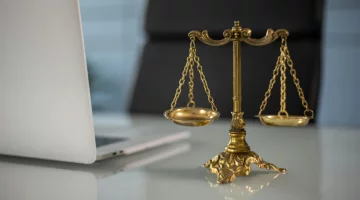The Critical Response: 7 Vital Steps to Take If You're Struck by a Car While Biking
When the rubber meets the road, cyclists are among the most vulnerable travelers. In the unfortunate event that a cyclist is struck by a car, knowing the correct steps to take can be the difference between a swift recovery and long-term consequences. These seven steps are not just a guide; they are the critical response actions that can protect a cyclist’s rights, health, and future.
- Get to Safety:
The first and foremost priority is to move to a safe location to prevent further injury. If you’re in the middle of the road or an unsafe area, assess your ability to move. If you can walk and your bike is operational, move to the sidewalk or another safe area away from traffic. However, if moving causes significant pain or you suspect serious injury, try to signal for help and wait for emergency services. Moving with certain injuries can exacerbate them, so when in doubt, stay put if you're not in immediate danger.
- Call Emergency Services:
Regardless of the perceived severity of the accident, call 911. You need a police report for any subsequent insurance claims, and it’s vital to have medical professionals assess your condition. Even if injuries aren’t immediately apparent, shock and adrenaline can mask pain and damage. A timely medical evaluation is crucial.
- Exchange Information but Do Not Negotiate:
While waiting for the authorities, exchange information with the driver involved. Obtain their name, contact information, insurance details, and vehicle registration number. If there are witnesses, get their contact information as well. It’s essential to not engage in any fault-finding discussions or negotiations with the driver; simply exchange the necessary information.
- Document the Scene:
Use your phone to take pictures of the scene, including your bike, the car, any skid marks, your injuries, and the surrounding area. These images can provide crucial evidence for accident reconstruction and insurance claims. If you’re unable to do so due to injury, ask a witness or the responding police officer to help.
- Seek Medical Attention:
Even if you feel fine, a visit to the hospital or your doctor is non-negotiable. Some injuries, like internal bleeding or concussions, may not be immediately apparent. A medical record starting from the day of the accident will also be important documentation if you need to pursue an injury claim.
- Preserve Evidence and Don’t Repair Your Bike:
Your bike and any damaged gear are now evidence. Resist the urge to have them repaired, as they can be used to demonstrate the impact and circumstances of the crash. Keep the clothing you were wearing during the accident as well; don't wash them. Store everything in a safe place until you can consult with an attorney.
- Consult with a Bicycle Accident Attorney:
An attorney who specializes in bicycle accidents can be an invaluable resource. They can help you navigate the complexities of insurance claims and, if necessary, litigation. A good attorney will work to ensure you receive compensation for medical bills, bike repairs, and any pain and suffering incurred due to the accident.
Why These Steps Are Important:
Following these steps is critical for several reasons. First, they ensure that you prioritize your immediate physical safety and health, which should always be the primary concern. Second, they set the foundation for a proper legal and insurance claim process. Documentation and evidence collection at the scene can significantly affect the outcome of any potential claims. Lastly, by involving professionals, whether medical or legal, you’re ensuring that your response to the accident is informed, appropriate, and thorough.
When a cyclist is hit by a car, the aftermath can be chaotic and confusing. It’s easy to become overwhelmed, but taking these steps helps to ensure that you are looking after both your immediate safety and your future interests. Remember that these steps are not just actions; they’re a form of self-advocacy and empowerment in a situation where you may feel most vulnerable.
This comprehensive guide is meticulously crafted as a navigational tool for the unforeseen and distressing event of a bicycle-car collision. It stands as a beacon of preparedness in the tumultuous aftermath of an accident. We fervently hope that the necessity to employ this guide never arises, yet the unpredictable nature of life's journey mandates a readiness for all eventualities. Being equipped with the knowledge of the proper steps to take not only fosters a sense of security but also empowers cyclists to manage the chaos that follows an accident with poise and assurance. Staying informed about the best practices in the wake of an accident is not merely about legal and medical readiness; it's about cultivating a mindset that prioritizes safety and preparedness in every cycling endeavor.
Further extending the sentiment of preparedness, this guide underscores the significance of advocating for one's health and rights, whether cruising down a serene bike path or navigating the bustling city streets. An informed cyclist is a protected one, and awareness is your shield on the road. Embracing the knowledge within this guide equips you to confidently handle the unexpected, ensuring that if ever you're faced with such a trying situation, your response will be measured, informed, and conducive to your well-being. Remember, your safety is paramount, and while the roads we travel may be shared with uncertainties, your ability to advocate for your health and rights should remain steadfast, both on and off the pedals.
More to Read:
Previous Posts:



